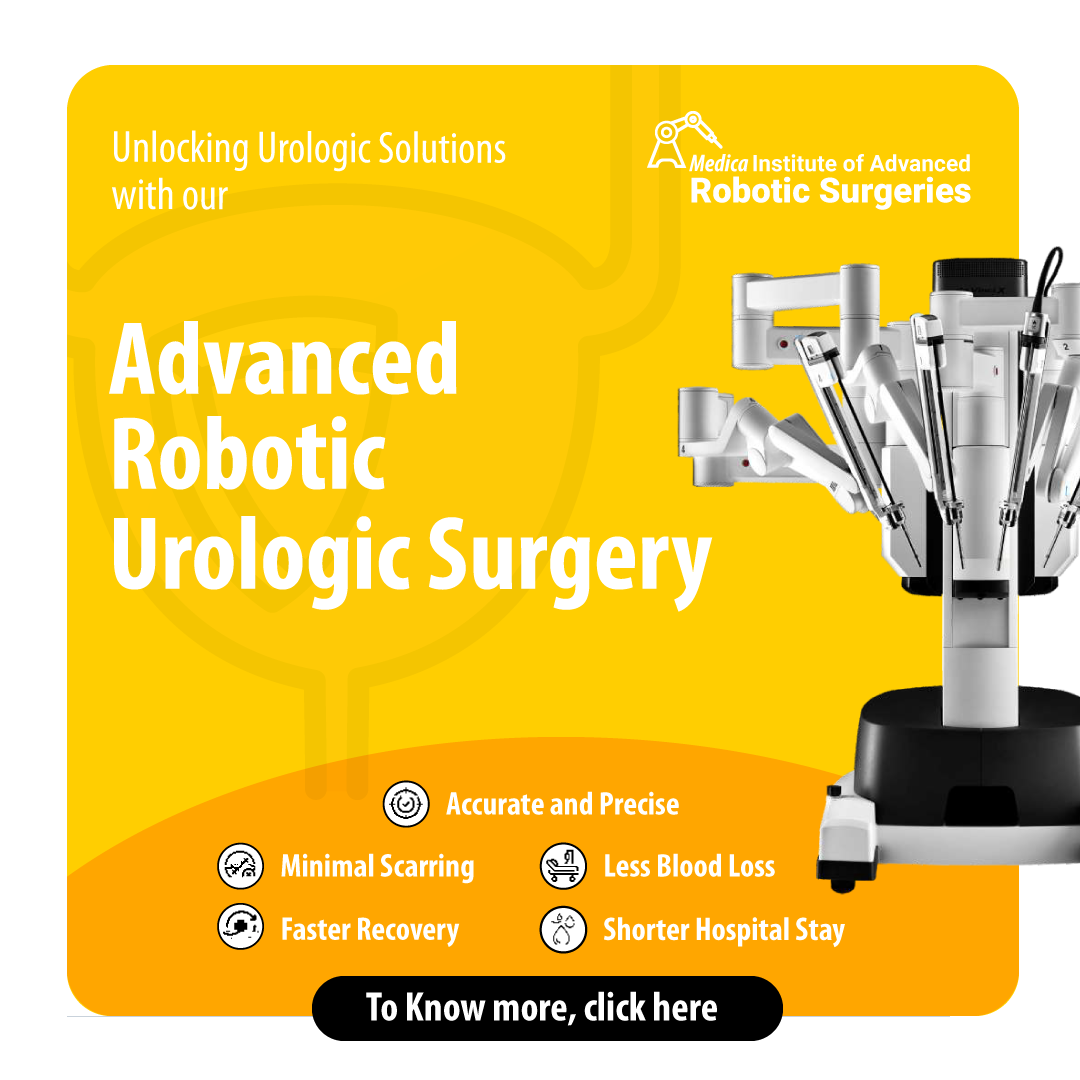Comprehensive Treatment for Polycystic Kidney Disease at Medica
The kidneys are in charge of filtering your blood. They eliminate waste, maintain the body’s fluid balance, and maintain proper electrolyte levels. About 40 times a day, all of the blood in your body travels through them. The kidney receives blood, removes waste, and adjusts salt, water, and minerals as needed. The blood that has been filtered is returned to the body. Waste is converted to urine, which gathers in the kidney’s pelvis, a funnel-shaped structure that drains to the bladder through a tube called the ureter.
Around a million microscopic filters called nephrons are found in each kidney. It’s possible that only 10% of your kidneys are functioning, yet you’re not aware of any symptoms or difficulties.
Polycystic kidney disease (PKD) is a genetic illness in which cyst clusters form mostly in the kidneys, causing them to expand and lose function over time. Cysts are non cancerous fluid-filled circular sacs. Cysts come in a variety of sizes and can grow to be quite enormous. Your kidneys can be damaged if you have a lot of cysts or if they are huge cysts.
Cysts can form in your liver and other parts of your body as a result of polycystic kidney disease. High blood pressure and renal failure are two major consequences of the condition.
The severity of PKD varies widely, and certain consequences can be avoided. Complications to your kidneys may be lessened with lifestyle modifications and therapies.
Free Doctor Assessment
Symptoms
Polycystic kidney disease symptoms can include:
- High blood pressure
- Back or side pain
- Blood in your urine
- A feeling of fullness in your abdomen
- Increased size of your abdomen due to enlarged kidneys
- Headaches
- Kidney stones
- Kidney failure
- Urinary tract or kidney infections
PKD is a type of chronic kidney disease that causes kidney function to deteriorate
Seek help from an expert
Call NowCauses
Polycystic kidney disease is caused by abnormal genes, which implies that it usually runs in families. A genetic mutation can sometimes occur on its own (spontaneously), leaving neither parent with a copy of the altered gene.
Polycystic kidney disease is divided into two categories, each of which is caused by a different genetic flaw:
- Autosomal Dominant Polycystic Kidney Disease (ADPKD): Between the ages of 30 and 40, signs and symptoms of ADPKD commonly appear. This condition was previously known as adult polycystic kidney disease, however it can also affect youngsters.
- Autosomal Recessive Polycystic Kidney Disease (ARPKD): This condition is far less prevalent than ADPKD. Symptoms and indicators often arise soon after birth. Symptoms don’t always develop until later in childhood or adolescence. To pass on this kind of the disease, both parents must have defective genes. If both parents have the disease-causing gene, each child has a 25% chance of developing it.
Having PKD increases one’s risk of developing chronic kidney disease (CKD).
What is CKD?
Chronic kidney disease, commonly known as chronic kidney failure, is characterized by the progressive loss of renal function. Wastes and excess fluids are removed from your blood by your kidneys, which are then excreted in urine. Advanced chronic renal disease can lead to dangerously high amounts of fluid, electrolytes, and wastes in the body. If kidney damage proceeds slowly, signs and symptoms of chronic renal disease emerge over time. Kidney failure can result in an accumulation of fluid or waste, as well as electrolyte imbalances.
Diagnosis of PKD
Your doctor may use imaging tests to search for cysts in the kidney, liver, and other organs to identify all three kinds of PKD. The following imaging studies are used to diagnose PKD:
- Ultrasound: This noninvasive test looks for cysts in your kidneys using sound waves.
- CT Scan: Smaller cysts in the kidneys can be detected using this test.
- MRI: This MRI employs powerful magnets to picture your body in order to see the structure of your kidneys and look for cysts.
- Intravenous Pyelogram: An intravenous pyelogram is a type of pyelogram that is performed on a patient suspecting PKD. A dye is used in this examination to make your blood vessels appear more clearly on an X-ray.
Having PKD increases one’s risk of developing chronic kidney disease (CKD).

Minimally Invasive
Surgery

World Renowned
Experts
EMI Facility
Available

Covid Safe
Environment
Treatment
Polycystic kidney disease varies in severity from person to person, even within the same family. People with PKD frequently reach end-stage renal disease between the ages of 55 and 65. However, some persons with PKD have a mild form of the disease and may never develop end-stage kidney disease. Medica has state-of-the-art facilities and is one of the best dialysis centers in the entire eastern region. We also have modern medical equipment to perform complex surgeries like kidney transplantation and more.
Our team of urologists specialize in using these advanced technologies to perform sophisticated urological surgery at a reasonable cost. We have all the facilities of a world-class healthcare provider keeping in mind efficiency and patient safety.









